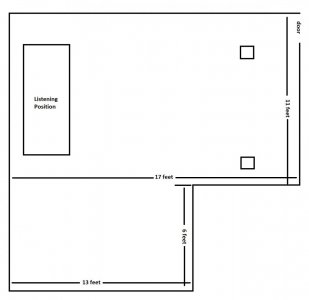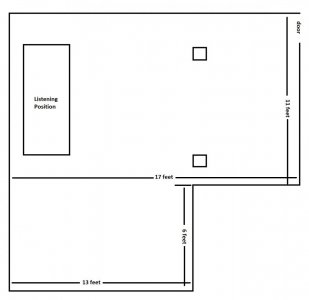rwnano
Active Member
I've been on the business-end of the audiophile world for the better part of two decades. It's a common joke within the industry that you can always squeeze more money out of a buyer by getting them to upgrade to speakers that are too large for their room. And then upselling expensive bigger amps, room optimization services and room treatments to compensate for the problematic speakers.
This is the reality:
- Bookshelves/2-ways of a product line will ALWAYS SOUND BETTER than the larger 3 or 4 way speakers, except in the very largest of rooms.
- Active subs are far more musical and accurate than passive "full range" towers.
- Room treatment matters far less when going with proper 2-way plus sub.
- Room positioning and optimization packages are another upsell to make speakers that are far too large work in a room.
- No amount of positioning and room treatment for giant speakers will cancel out the inherent negative speaker/room bass interactions.
- single midrange will have better point-source accuracy than an MTM design in any real listening situation
- MTM design is far harder to position accurately relative to listener to achieve same results as a standard 2-way
- Less crossover components in the system = cleaner sound
- Handoff to bass around 220hz is eliminated
- Amp works less to control two drivers than many more, thus cleaner signal, etc.
- Sub bass, in a 2-way system, will be handled by a corrected sub. A dsp sub will 100% compensate for room problems, while a passive full range can never truly have room-accurate bass
- The listening position is waaaay too close to the giant speakers (the ottoman is like 2 feet away from the speaker position)
- At that distance, the drivers won't "blend" and create a coherent image
- The distance from the top tweeters on the towers to the ear are way off than the bottom tweeters
- The top mid driver is, likewise, at a different time delay than the bottom mid driver
- The only way to have them blend is to: A) move way back and B) make super sure the listening position is exactly centered between all the drivers or C) have a very complicated digital crossover to time align all the drivers to the exact listening position
- Both sets of speakers in that room are appropriate for a space 800+sqft minimum.
And, again, this isn't hypothetical on my part, the business side has tested this, and deals with it at every single audio show. More = better to the consumer, right? One test to demonstrate this multi-driver effect was a speaker system designed as a two-way monitor first, but also had additional tweeters/woofers that could be turned on or off. In every scenario, the basic 2-way design sounded more coherent, accurate and, of course, musical.
So why the options for tons of tweeters/drivers? Because that's what the sales people could upsell to the buyers. Like expensive cables that can't pass a blind A/B test, giant speakers pay the bills. If companies only sold or pushed their 2-way speakers with active subs, they'd make far less money. And eliminate the upgrade path to keep customers spending more over time.
Anyway, end of rant, hope this helps some people out there
UPDATE: For those that disagree with the premise above, do you believe a speaker can, theoretically, be too large for a room? If so, what is that limit?
UPDATE 2: Speaker companies add bigger drivers for bigger rooms. Here is a Focal Aria 948 speaker: https://www.focal.com/us/high-fidelity-speakers/aria-900/aria-948
"...for rooms measuring from 320ft2 (30m2) and from a recommended listening distance of 12ft (3.5m)."
And that's a speaker with 2 8" woofers. Not some of these speakers on here with double 10" or 12" woofers in a 15x15ft room with a listening distance of 6ft.
UPDATE 3: Anyone following Velocipede's posts below, he points out: "DSP, whether built into the sub or stand alone before the amp is important. IMO: Everyone can benefit from DSP for low end subwoofer or not. I have towers and dual subs and I tune them all with DSP for optimal results. My listening position is the same despite my room. My room determines the modes, and thus my DSP settings."
I agree. DSP is how you compensate for speakers that are too large for the room. Adding subs will also help even out the bass, assuming one runs the larger speakers full-range. If they cross over to the subs at, say, 200Hz, and the 3rd driver in the system is at 200Hz as well, then you've made the 3 way speakers into, in effect, 2 way speakers plus an active subwoofer. At some point, if you actively power each area -- sub bass, bass, mids, highs -- you've arrived at an active speaker with an active crossover. Which is ideal.
But this post is about those with mega speakers in tiny spaces without dsp



